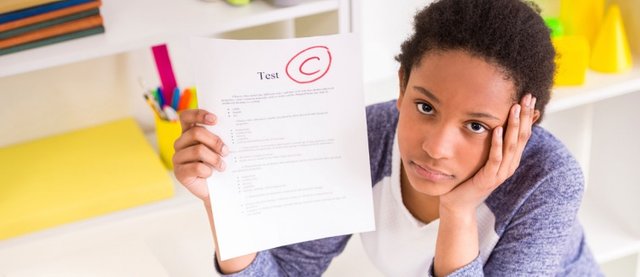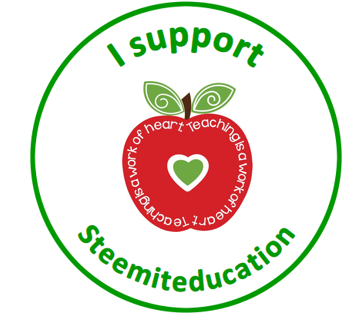The High School classroom: Self-esteem.
Self-esteem can be defined as self-love. However, it goes much further, because self-love has many aspects. Like our best friend, an individual with an adequate self-esteem takes care of himself, loves himself, strives to stay healthy, forms himself properly, keeps away from what could harm him.
A good definition of self-esteem could be the following:
"In psycology, the term self-esteem is used to describe a person's overall sense of self-worth or personal value. In other words, how much you appreciate and like yourself."
Source: https://www.verywellmind.com/what-is-self-esteem-279586

This is why we talk about high or low self-esteem. Low self-esteem is not healthy, but neither is excessively high self-esteem. The ideal is the realistic concept of oneself, neither very high nor very low, accompanied by self-acceptance.
Definitely, a crisis of self-esteem is suffered during adolescence. In this stage we are not children, and neither adults. Sometimes we want to be treated like children, and at other times as adults. To top it off, our body changes and our hormones manifest. It's a party of transformations of all kinds, and not everyone has fun in this party. For some adolescents it is a real tragedy, where sexual changes, the disproportion in the size of extremities in relation to the body, acne, new hair and mood changes are the order of the day. It is not easy to maintain a healthy level of self-esteem in these conditions.

However, we all know that this stage is temporary, that everything will change for the better, and that adolescence has, on the other hand, many positive things and it is a stage to be lived with joy. Nevertheless, unfortunately, most of us who know this are adults who have already passed this stage and know that it is so. For a teenager it can be a never-ending nightmare. It is important that parents and teachers are there to support and guide them on an appropriate path to adulthood.
In our classroom, we will find students with different levels of self-esteem. It is up to us as teachers to appreciate those differences and reinforce the positive aspects in each one, without demerit of the errors or defects manifested by each one. A student with low self-esteem is easy to identify: he does not intervene in class, usually out of fear of criticism or ridicule and becomes nervous when he has to. Their grades are low or do not leave the average. He will not approach the teacher with questions or comments, and if he speaks to him, he will most likely not keep his eyes. A teenager with low self-esteem also reflects it in his personal arrangement: nails, hair, clothing. They usually seek to cover themselves with their dress, even covering part of their face with their hair.

The teacher should take advantage of the moments when a student with low self-esteem has the courage to participate in class, or be forced by the circumstances. The mere fact that he intervenes should be cause for congratulation, taking care not to put it in evidence before his companions because "finally X student is participating." A student with low self-esteem should be treated with sensitivity in this regard.
As teachers, we must be aware of the importance we have in the lives of our students and how much we can positively or negatively influence their self-esteem. An adequate response on our part to any interaction with our students is able to help their healthy growth as individuals. We must not only believe in the abilities of our students, it is our duty to let them know, to stimulate those abilities, that light that each one radiates, however weak it may be. Most of them never forget a teacher who has held out his hand, made him feel important, and appreciated his work or words.

Congratulations! This post has been upvoted from the communal account, @minnowsupport, by leilanyarevalo from the Minnow Support Project. It's a witness project run by aggroed, ausbitbank, teamsteem, someguy123, neoxian, followbtcnews, and netuoso. The goal is to help Steemit grow by supporting Minnows. Please find us at the Peace, Abundance, and Liberty Network (PALnet) Discord Channel. It's a completely public and open space to all members of the Steemit community who voluntarily choose to be there.
If you would like to delegate to the Minnow Support Project you can do so by clicking on the following links: 50SP, 100SP, 250SP, 500SP, 1000SP, 5000SP.
Be sure to leave at least 50SP undelegated on your account.
Cool
Posted using Partiko Android
Great read @leilanyarevalo. As a former teacher myself, I believe one of the best ways to assist students in the classroom in relation to their self-esteem is carefully formulated group work that requires an essence of reciprocal teaching. It allows all students a chance to share their thoughts in a smaller group dynamic, and takes away a lot of the stress that putting your hand up in class can bring.
In fact, removing the hands up routine altogether and using some AFL good practises can bring a quiet student to the fore and allows everyone a chance to think.
Obviously, a student only raises their hand when they think they know the answer, otherwise why would they? I used to have a jam jar filled with lolly pop sticks with every students name on them, and after giving sufficient time to work out an answer, I'd pick a name at random.
If the student didn't know the answer, this was as valuable to me as their teacher, as the student who did know the answer. I could then break the topic down into more detail or allow some peer teaching to take place.
Thanks for reading and for your interesting comments. In my class, I take into account any participation, from students who know the answer, from those who don't but have questions , from those who give the wrong answer but what they said is useful to continue the conversation. I am going to read more about assessment for learning. Thanks.